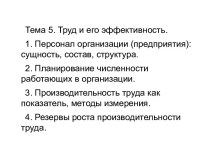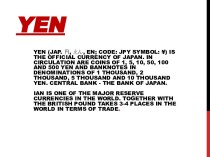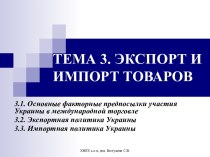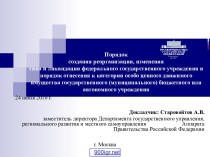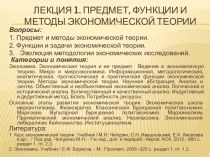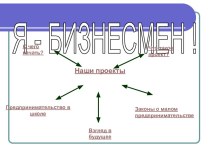- Главная
- Разное
- Бизнес и предпринимательство
- Образование
- Развлечения
- Государство
- Спорт
- Графика
- Культурология
- Еда и кулинария
- Лингвистика
- Религиоведение
- Черчение
- Физкультура
- ИЗО
- Психология
- Социология
- Английский язык
- Астрономия
- Алгебра
- Биология
- География
- Геометрия
- Детские презентации
- Информатика
- История
- Литература
- Маркетинг
- Математика
- Медицина
- Менеджмент
- Музыка
- МХК
- Немецкий язык
- ОБЖ
- Обществознание
- Окружающий мир
- Педагогика
- Русский язык
- Технология
- Физика
- Философия
- Химия
- Шаблоны, картинки для презентаций
- Экология
- Экономика
- Юриспруденция
Что такое findslide.org?
FindSlide.org - это сайт презентаций, докладов, шаблонов в формате PowerPoint.
Обратная связь
Email: Нажмите что бы посмотреть
Презентация на тему Firms in the Global Economy: Export Decisions, Outsourcing, and Multinational Enterprises
Содержание
- 2. PreviewMonopolistic competition and tradeThe significance of intra-industry
- 3. IntroductionWhen economies of scale exist, large firms
- 4. Introduction (cont.)Internal economies of scale imply that
- 5. Introduction (cont.)In most sectors, goods are differentiated
- 6. The Theory of Imperfect CompetitionIn imperfect competition,
- 7. Monopoly: A Brief ReviewA monopoly is an
- 8. Monopoly: A Brief ReviewAssume that the demand
- 9. Fig. 8-1: Monopolistic Pricing and Production Decisions
- 10. Monopoly: A Brief Review (cont.)Average cost is
- 11. Fig. 8-2: Average Versus Marginal Cost
- 12. Monopoly: A Brief Review (cont.)The profit-maximizing output
- 13. Monopolistic CompetitionMonopolistic competition is a simple model
- 14. Monopolistic Competition (cont.)A firm in a monopolistically
- 15. Monopolistic Competition (cont.)Q = S[1/n – b(P
- 16. Monopolistic Competition (cont.)Assume that firms are symmetric:
- 17. Monopolistic Competition (cont.)AC = n(F/S) + cAs
- 18. Fig. 8-3: Equilibrium in a Monopolistically Competitive Market
- 19. Monopolistic Competition (cont.)If monopolistic firms face linear
- 20. Monopolistic Competition (cont.)At some number of firms,
- 21. Monopolistic Competition (cont.)If the number of firms
- 22. Monopolistic Competition and TradeBecause trade increases market
- 23. Fig. 8-4: Effects of a Larger Market
- 24. Monopolistic Competition and Trade (cont.)As a result
- 25. Fig. 8-5: Equilibrium in the Automobile Market
- 26. Fig. 8-5: Equilibrium in the Automobile Market (cont.)
- 27. Table 8-1: Hypothetical Example of Gains from Market Integration
- 28. Monopolistic Competition and Trade (cont.)Product differentiation and
- 29. The Significance of Intra-industry TradeIntra-industry trade refers
- 30. The Significance of Intra-industry Trade (cont.)About 25–50%
- 31. Table 8-2: Indexes of Intra-Industry Trade for U.S. Industries, 2009
- 32. Firm Responses to TradeIncreased competition tends to
- 33. Fig. 8-6: Performance Differences Across Firms
- 34. Trade Costs and Export DecisionsMost U.S. firms
- 35. Fig. 8-7: Winners and Losers from Economic Integration
- 36. Trade Costs and Export Decisions (cont.)Trade costs
- 37. Table 8-3: Proportion of U.S. Firms Reporting Export Sales by Industry, 2002
- 38. Fig: 8-8: Export Decisions with Trade Costs
- 39. DumpingDumping is the practice of charging a
- 40. Dumping (cont.)Dumping can be a profit-maximizing strategy:A
- 41. Protectionism and DumpingA U.S. firm may appeal
- 42. Protectionism and Dumping (cont.)Next, the International Trade
- 43. Protectionism and Dumping (cont.)Most economists believe that
- 44. Multinationals and OutsourcingForeign direct investment refers to
- 45. Multinationals and Outsourcing (cont.)Greenfield FDI is when
- 46. Multinationals and Outsourcing (cont.)Developed countries have been
- 47. Fig. 8-9: Inflows of Foreign Direct Investment, 1980-2009
- 48. Multinationals and Outsourcing (cont.)Two main types of
- 49. Multinationals and Outsourcing (cont.)Vertical FDI is mainly
- 50. Multinationals and Outsourcing (cont.)Horizontal FDI is dominated
- 51. Fig. 8-10: Outward Foreign Direct Investment for Top Countries, 2007-2009Source: UNCTAD, World Investment Report, 2010.
- 52. The Firm’s Decision Regarding Foreign Direct InvestmentProximity-concentration
- 53. The Firm’s Decision Regarding Foreign Direct Investment
- 54. The Firm’s Decision Regarding Foreign Direct Investment
- 55. The Firm’s Decision Regarding Foreign Direct Investment
- 56. The Firm’s Decision Regarding Foreign Direct Investment
- 57. The Firm’s Decision Regarding Foreign Direct Investment
- 58. The Firm’s Decision Regarding Foreign Direct Investment
- 59. The Firm’s Decision Regarding Foreign Direct Investment
- 60. SummaryInternal economies of scale imply that more
- 61. Summary (cont.)Monopolistic competition predicts intra-industry trade, and
- 62. Summary (cont.)Dumping may be a profitable strategy
- 63. Скачать презентацию
- 64. Похожие презентации
PreviewMonopolistic competition and tradeThe significance of intra-industry tradeFirm responses to trade: winners, losers, and industry performanceDumpingMultinationals and outsourcing
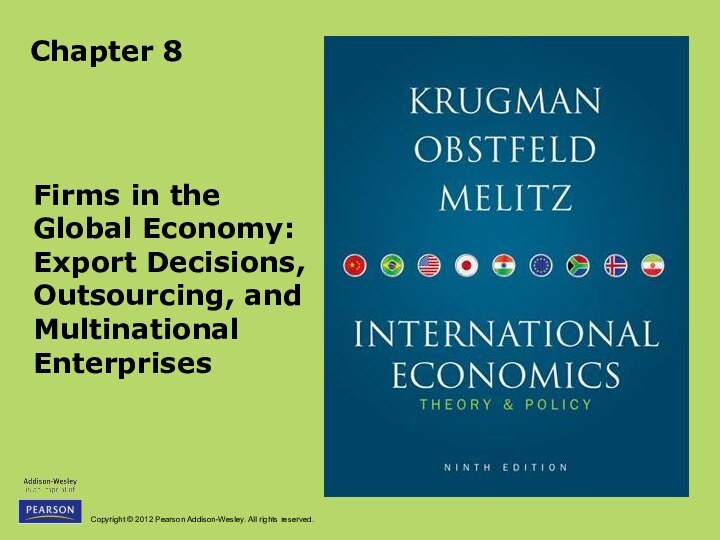













![Firms in the Global Economy: Export Decisions, Outsourcing, and Multinational Enterprises Monopolistic Competition (cont.)Q = S[1/n – b(P – P)] Q is an](/img/tmb/15/1407377/51df33a7760dc2883889cd8a152e733c-720x.jpg)
















































Слайд 2
Preview
Monopolistic competition and trade
The significance of intra-industry trade
Firm
responses to trade: winners, losers, and industry performance
outsourcing
Слайд 3
Introduction
When economies of scale exist, large firms may
be more efficient than small firms, and the industry
may consist of a monopoly or a few large firms.Production may be imperfectly competitive in the sense that excess or monopoly profits are captured by large firms.
Internal economies of scale result when large firms have a cost advantage over small firms, causing the industry to become uncompetitive.
Слайд 4
Introduction (cont.)
Internal economies of scale imply that a
firm’s average cost of production decreases the more output
it produces.Perfect competition that drives the price of a good down to marginal cost would imply losses for those firms because they would not be able to recover the higher costs incurred from producing the initial units of output.
As a result, perfect competition would force those firms out of the market.
Слайд 5
Introduction (cont.)
In most sectors, goods are differentiated from
each other and there are other differences across firms.
Integration
causes the better-performing firms to thrive and expand, while the worse-performing firms contract.Additional source of gain from trade: As production is concentrated toward better-performing firms, the overall efficiency of the industry improves.
Study why those better-performing firms have a greater incentive to engage in the global economy.
Слайд 6
The Theory of Imperfect Competition
In imperfect competition, firms
are aware that they can influence the prices of
their products and that they can sell more only by reducing their price.This situation occurs when there are only a few major producers of a particular good or when each firm produces a good that is differentiated from that of rival firms.
Each firm views itself as a price setter, choosing the price of its product.
Слайд 7
Monopoly: A Brief Review
A monopoly is an industry
with only one firm.
An oligopoly is an industry
with only a few firms.In these industries, the marginal revenue generated from selling more products is less than the uniform price charged for each product.
To sell more, a firm must lower the price of all units, not just the additional ones.
The marginal revenue function therefore lies below the demand function (which determines the price that customers are willing to pay).
Слайд 8
Monopoly: A Brief Review
Assume that the demand curve
the firm faces is a straight line Q =
A – B(P), where Q is the number of units the firm sells, P the price per unit, and A and B are constants.Marginal revenue equals MR = P – Q/B.
Suppose that total costs are C = F + c(Q), where F is fixed costs, those independent of the level of output, and c is the constant marginal cost.
Слайд 10
Monopoly: A Brief Review (cont.)
Average cost is the
cost of production (C) divided by the total quantity
of production (Q).AC = C/Q = F/Q + c
Marginal cost is the cost of producing an additional unit of output.
A larger firm is more efficient because average cost decreases as output Q increases: internal economies of scale.
Слайд 12
Monopoly: A Brief Review (cont.)
The profit-maximizing output occurs
where marginal revenue equals marginal cost.
At the intersection of
the MC and MR curves, the revenue gained from selling an extra unit equals the cost of producing that unit.The monopolist earns some monopoly profits, as indicated by the shaded box, when P > AC.
Слайд 13
Monopolistic Competition
Monopolistic competition is a simple model of
an imperfectly competitive industry that assumes that each firm
can
differentiate its product from the product of competitors, andtakes the prices charged by its rivals as given.
Слайд 14
Monopolistic Competition (cont.)
A firm in a monopolistically competitive
industry is expected to sell
more as total sales in
the industry increase and as prices charged by rivals increase.less as the number of firms in the industry decreases and as the firm’s price increases.
These concepts are represented by the function:
Слайд 15
Monopolistic Competition (cont.)
Q = S[1/n – b(P –
P)]
Q is an individual firm’s sales
S is the
total sales of the industryn is the number of firms in the industry
b is a constant term representing the responsiveness of a firm’s sales to its price
P is the price charged by the firm itself
P is the average price charged by its competitors
Слайд 16
Monopolistic Competition (cont.)
Assume that firms are symmetric: all
firms face the same demand function and have the
same cost function.Thus all firms should charge the same price and have equal share of the market Q = S/n
Average costs should depend on the size of the market and the number of firms:
AC = C/Q = F/Q + c = n F/S + c
Слайд 17
Monopolistic Competition (cont.)
AC = n(F/S) + c
As the
number of firms n in the industry increases, the
average cost increases for each firm because each produces less.As total sales S of the industry increase, the average cost decreases for each firm because each produces more.
Слайд 19
Monopolistic Competition (cont.)
If monopolistic firms face linear demand
functions, Q = A – B(P),
where A and
B are constants.When firms maximize profits, they should produce until marginal revenue equals marginal cost:
MR = P – Q/B = c
As the number of firms n in the industry increases, the price that each firm charges decreases because of increased competition.
Слайд 20
Monopolistic Competition (cont.)
At some number of firms, the
price that firms charge (which decreases in n) matches
the average cost that firms pay (which increases in n).At this long-run equilibrium number of firms in the industry, firms have no incentive to enter or exit the industry.
Слайд 21
Monopolistic Competition (cont.)
If the number of firms is
greater than or less than the equilibrium number, then
firms have an incentive to exit or enter the industry.Firms have an incentive to exit the industry when price < average cost.
Firms have an incentive to enter the industry when price > average cost.
Слайд 22
Monopolistic Competition and Trade
Because trade increases market size,
trade is predicted to decrease average cost in an
industry described by monopolistic competition.Industry sales increase with trade leading to decreased average costs: AC = n(F/S) + c
Because trade increases the variety of goods that consumers can buy under monopolistic competition, it increases the welfare of consumers.
And because average costs decrease, consumers can also benefit from a decreased price.
Слайд 24
Monopolistic Competition and Trade (cont.)
As a result of
trade, the number of firms in a new international
industry is predicted to increase relative to each national market.But it is unclear if firms will locate in the domestic country or foreign countries.
Integrating markets through international trade therefore has the same effects as growth of a market within a single country.
Слайд 28
Monopolistic Competition and Trade (cont.)
Product differentiation and internal
economies of scale lead to trade between similar countries
with no comparative advantage differences between them.This is a very different kind of trade than the one based on comparative advantage, where each country exports its comparative advantage good.
Слайд 29
The Significance of Intra-industry Trade
Intra-industry trade refers to
two-way exchanges of similar goods.
Two new channels for welfare
benefits from trade:Benefit from a greater variety at a lower price.
Firms consolidate their production and take advantage of economies of scale.
A smaller country stands to gain more from integration than a larger country.
Слайд 30
The Significance of Intra-industry Trade (cont.)
About 25–50% of
world trade is intra-industry.
Most prominent is the trade of
manufactured goods among advanced industrial nations, which accounts for the majority of world trade.For the United States, industries that have the most intra-industry trade—such as pharmaceuticals, chemicals, and specialized machinery—require relatively larger amounts of skilled labor, technology, and physical capital.
Слайд 32
Firm Responses to Trade
Increased competition tends to hurt
the worst-performing firms — they are forced to exit.
The best-performing firms take the greatest advantage of new sales opportunities and expand the most.
When the better-performing firms expand and the worse-performing ones contract or exit, overall industry performance improves.
Trade and economic integration improve industry performance as much as the discovery of a better technology does.
Слайд 34
Trade Costs and Export Decisions
Most U.S. firms do
not report any exporting activity at all — sell
only to U.S. customers.In 2002, only 18% of U.S. manufacturing firms reported any sales abroad.
Even in industries that export much of what they produce, such as chemicals, machinery, electronics, and transportation, fewer than 40 percent of firms export.
A major reason why trade costs reduce trade so much is that they drastically reduce the number of firms selling to customers across the border.
Trade costs also reduce the volume of export sales of firms selling abroad.
Слайд 36
Trade Costs and Export Decisions (cont.)
Trade costs added
two important predictions to our model of monopolistic competition
and trade:Why only a subset of firms export, and why exporters are relatively larger and more productive (lower marginal costs).
Overwhelming empirical support for this prediction that exporting firms are bigger and more productive than firms in the same industry that do not export.
In the United States, in a typical manufacturing industry, an exporting firm is on average more than twice as large as a firm that does not export.
Differences between exporters and nonexporters are even larger in many European countries.
Слайд 39
Dumping
Dumping is the practice of charging a lower
price for exported goods than for goods sold
domestically.Dumping is an example of price discrimination: the practice of charging different customers different prices.
Price discrimination and dumping may occur only if
imperfect competition exists: firms are able to influence market prices.
markets are segmented so that goods are not easily bought in one market and resold in another.
Слайд 40
Dumping (cont.)
Dumping can be a profit-maximizing strategy:
A firm
with a higher marginal cost chooses to set a
lower markup over marginal cost.Therefore, an exporting firm will respond to the trade cost by lowering its markup for the export market.
This strategy is considered to be dumping, regarded by most countries as an “unfair” trade practice.
Слайд 41
Protectionism and Dumping
A U.S. firm may appeal to
the Commerce Department to investigate if dumping by foreign
firms has injured the U.S. firm.The Commerce Department may impose an “anti-dumping duty” (tax) to protect the U.S. firm.
Tax equals the difference between the actual and “fair” price of imports, where “fair” means “price the product is normally sold at in the manufacturer's domestic market.”
Слайд 42
Protectionism and Dumping (cont.)
Next, the International Trade Commission
(ITC) determines if injury to the U.S. firm has
occurred or is likely to occur.If the ITC determines that injury has occurred or is likely to occur, the anti-dumping duty remains in place.
http://www.usitc.gov/trade_remedy/731_ad_ 701_cvd/index.htm
Слайд 43
Protectionism and Dumping (cont.)
Most economists believe that the
enforcement of dumping claims is misguided.
Trade costs have a
natural tendency to induce firms to lower their markups in export markets.Such enforcement may be used excessively as an excuse for protectionism.
Слайд 44
Multinationals and Outsourcing
Foreign direct investment refers to investment
in which a firm in one country directly controls
or owns a subsidiary in another country.If a foreign company invests in at least 10% of the stock in a subsidiary, the two firms are typically classified as a multinational corporation.
10% or more of ownership in stock is deemed to be sufficient for direct control of business operations.
Слайд 45
Multinationals and Outsourcing (cont.)
Greenfield FDI is when a
company builds a new production facility abroad.
Brownfield FDI (or
cross-border mergers and acquisitions) is when a domestic firm buys a controlling stake in a foreign firm.Greenfield FDI has tended to be more stable, while cross-border mergers and acquisitions tend to occur in surges.
Слайд 46
Multinationals and Outsourcing (cont.)
Developed countries have been the
biggest recipients of inward FDI.
much more volatile than FDI
going to developing and transition economies. Steady expansion in the share of FDI flowing to developing and transition countries.
Accounted for half of worldwide FDI flows in 2009.
Sales of FDI affiliates are often used as a measure of multinational activity.
Слайд 48
Multinationals and Outsourcing (cont.)
Two main types of FDI:
Horizontal
FDI when the affiliate replicates the production process (that
the parent firm undertakes in its domestic facilities) elsewhere in the world.Vertical FDI when the production chain is broken up, and parts of the production processes are transferred to the affiliate location.
Слайд 49
Multinationals and Outsourcing (cont.)
Vertical FDI is mainly driven
by production cost differences between countries (for those parts
of the production process that can be performed in another location).Vertical FDI is growing fast and is behind the large increase in FDI inflows to developing countries.
Слайд 50
Multinationals and Outsourcing (cont.)
Horizontal FDI is dominated by
flows between developed countries.
Both the multinational parent and the
affiliates are usually located in developed countries. The main reason for this type of FDI is to locate production near a firm’s large customer bases.
Hence, trade and transport costs play a much more important role than production cost differences for these FDI decisions.
Слайд 51 Fig. 8-10: Outward Foreign Direct Investment for Top
Countries, 2007-2009
Source: UNCTAD, World Investment Report, 2010.
Слайд 52
The Firm’s Decision Regarding Foreign Direct Investment
Proximity-concentration trade-off:
High trade costs associated with exporting create an incentive
to locate production near customers. Increasing returns to scale in production create an incentive to concentrate production in fewer locations.
Слайд 53
The Firm’s Decision Regarding Foreign Direct Investment (cont.)
FDI
activity concentrated in sectors with high trade costs.
When increasing
returns to scale are important and average plant sizes are large, we observe higher export volumes relative to FDI.Multinationals tend to be much larger and more productive than other firms (even exporters) in the same country.
Слайд 54
The Firm’s Decision Regarding Foreign Direct Investment (cont.)
The
horizontal FDI decision involves a trade-off between the per-unit
export cost t and the fixed cost F of setting up an additional production facility.If t(Q) > F, costs more to pay trade costs t on Q units sold abroad than to pay fixed cost F to build a plant abroad.
When foreign sales large Q > F/t, exporting is more expensive and FDI is the profit-maximizing choice.
Low costs make more apt to choose FDI due to larger sales.
Слайд 55
The Firm’s Decision Regarding Foreign Direct Investment (cont.)
The
vertical FDI decision also involves a trade-off between cost
savings and the fixed cost F of setting up an additional production facility.Cost savings related to comparative advantage make some stages of production cheaper in other countries.
Слайд 56
The Firm’s Decision Regarding Foreign Direct Investment (cont.)
Foreign
outsourcing or offshoring occurs when a firm contracts with
an independent firm to produce in the foreign location.In addition to deciding the location of where to produce, firms also face an internalization decision: whether to keep production done by one firm or by separate firms.
Слайд 57
The Firm’s Decision Regarding Foreign Direct Investment (cont.)
Internalization
occurs when it is more profitable to conduct transactions
and production within a single organization. Reasons for this include:Technology transfers: transfer of knowledge or another form of technology may be easier within a single organization than through a market transaction between separate organizations.
Patent or property rights may be weak or nonexistent.
Knowledge may not be easily packaged and sold.
Слайд 58
The Firm’s Decision Regarding Foreign Direct Investment (cont.)
Vertical
integration involves consolidation of different stages of a production
process.Consolidating an input within the firm using it can avoid holdup problems and hassles in writing complete contracts.
But an independent supplier could benefit from economies of scale if it performs the process for many parent firms.
Слайд 59
The Firm’s Decision Regarding Foreign Direct Investment (cont.)
Foreign
direct investment should benefit the countries involved for reasons
similar to why international trade generates gains.Multinationals and firms that outsource take advantage of cost differentials that favor moving production (or parts thereof) to particular locations.
FDI is very similar to the relocation of production that occurred across sectors when opening to trade.
There are similar welfare consequences for the case of multinationals and outsourcing: Relocating production to take advantage of cost differences leads to overall gains from trade.
Слайд 60
Summary
Internal economies of scale imply that more production
at the firm level causes average costs to fall.
With
monopolistic competition, each firm can raise prices somewhat above those on competing products due to product differentiation but must compete with other firms whose prices are believed to be unaffected by each firm’s actions. Monopolistic competition allows for gains from trade through lower costs and prices, as well as through wider consumer choice.
Слайд 61
Summary (cont.)
Monopolistic competition predicts intra-industry trade, and does
not predict changes in income distribution within a country.
Location
of firms under monopolistic competition is unpredictable, but countries with similar relative factors are predicted to engage in intra-industry trade.
Слайд 62
Summary (cont.)
Dumping may be a profitable strategy when
a firm faces little competition in its domestic market
and faces heavy competition in foreign markets.Multinationals are typically larger and more productive than exporters, which in turn are larger and more efficient than firms that sell only to the domestic market.




